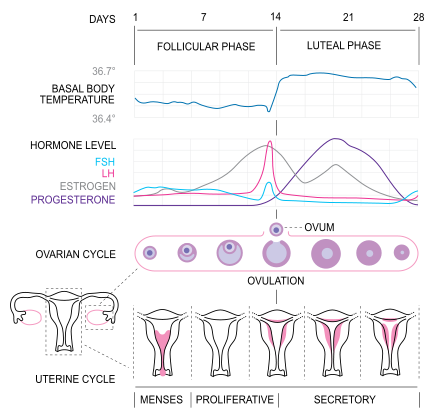Note: Information provided on this page is for general education only, please seek medical assistance when in doubt
Ovulation occurs about midway through the menstrual cycle, for most women’s usually 14.6 days from the beginning of the last menstrual period (LMP), however ovulation may occur little earlier or could be delayed by couple of days this differs from woman to woman and period to period with an overall 95% prediction interval of 8.2 to 20.5 days.
Before ovulation the level of Estrogen peaks, which causes a surge in levels of luteinizing hormone (LH) and follicle-stimulating hormone (FSH) that lasts from 24 to 36 hours, and results in the rupture of the ovarian follicles, causing the oocyte to be released from the ovary via the oviduct. This process is termed as ovulation.
Accurate date of ovulation can be predicted by charting symptoms such as basal body temperature, Mittelschmerz and cervical position this method is called sympto-thermal method. Urine test kits known as ovulation predictor kits or OPKs are available that detects the LH surge that occurs 24 to 36 hours before ovulation. Many computerized devices that interpret basal body temperatures, urinary test results, or changes in saliva, called fertility monitors are also available; however they are mostly used medically for infertility treatments.

(image from the wikimedia commons, credits to Isometrik)





